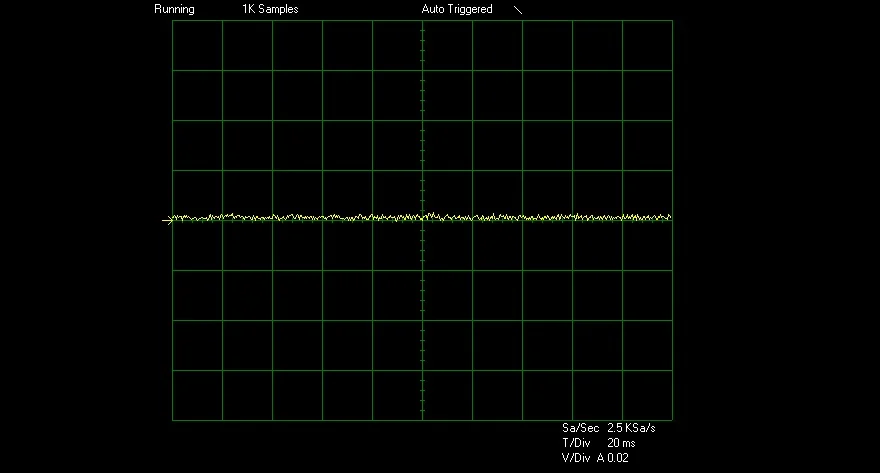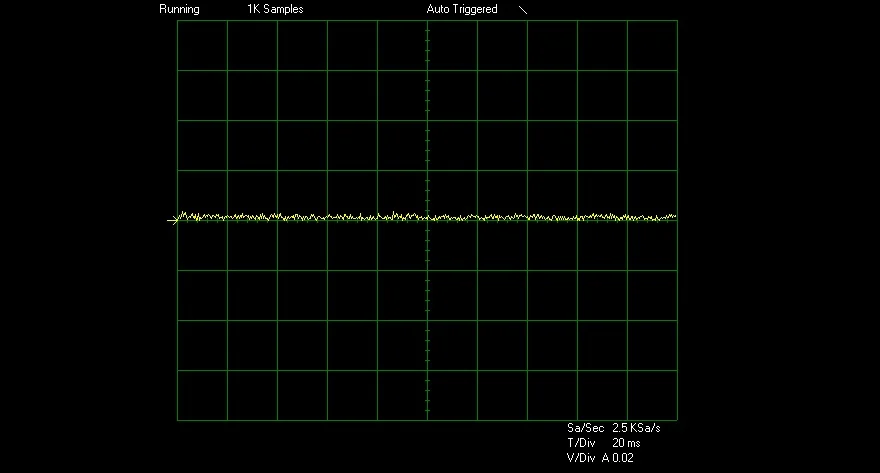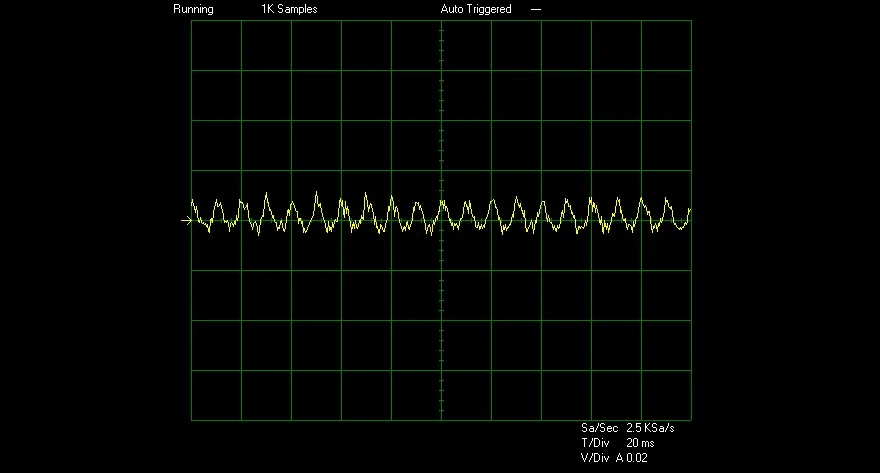1st Player NGDP 1300W
- Alexandros Boukanov
- Mar 19, 2024
- 10 min read
Updated: Mar 20, 2024

The 1STPLAYER brand is little known to Europian users. As we can see from the name, it specializes in components and peripherals for gamers. In addition, the company also produces power supplies on the platform of its parent company Helly Technology, a manufacturer of power supplies (this OEM platform is found in many brands). This is the first time I review a product from 1st Player, and I am curious to see what this PSU looks like internally and how it performs. Thanks to its mother company, Helly Technology, 1st Player can push pricing of its product lower than competing offerings, which is a tremendous advantage. The 1STPLAYER NGDP 1300W power supply is currently the second one in the line of 1STPLAYER brand power supplies that has received an 80 PLUS Platinum energy efficiency certificate (there is a 1000 W version), and complies with the latest ATX 3.0 standard, which, among other things, implies support for a 12VHPWR power line with a transmitted power of up to 600 W. 1STPLAYER NGDP 1300W is available in two color options – black or white.
The input data is impressive. The design of the power supply used a circuit that included a resonant converter (LLC) and a direct current converter (DC-DC). The following protection measures were also implemented: undervoltage protection (UVP), overvoltage protection (OVP), overload protection for total power on all channels (OPP), short circuit protection (SCP), overheat protection (OTP) and lightning protection. The manufacturer has declared a mean time between failures of 100,000 hours. The 1st Player NGDP 1300W has a Cybenetics Platinum efficiency rating, and in noise, it is Cybenetics Standard+ (35-40 dB[A]).

Packaging & Contents

The way the 1STPLAYER NGDP power supply is packaged deserves special attention. The power supply is securely packaged in two boxes.

The first, shipping, made of ordinary pressed cardboard with all the necessary information.

The first, shipping, made of ordinary pressed cardboard with all the necessary information.

On one of the sides the manufacturer explains what the name NGDP means. This is “Next Generation Dominating Power” that needs no translation.

It contains references to the power supply’s compliance with 80 PLUS Platinum, ATX 3.0, PCIe 5.0 standards, support for a 12VHPWR power cable for the latest video cards and a maximum total power of 1300 W. Also, among other things, there is an image in the form of a spider.

The power supply is located at the very bottom of the box, secured by two soft foam inserts at the top and bottom.

In addition to a set of cables, the user will receive several branded Velcro ties, zip ties, a PSU jump-starter and fixing bolts. The documentation includes a user manual with product specifications, a warranty card and a booklet with an illustrated description of connecting power cables when assembling the system unit..

One motherboard power cable 20+4 pin.
One video card power cable type 12VHPWR.
One Molex cable with four connectors.
Two CPU 4+4 pin cables.
Four PCI-E 6+2 pin cables.
Three SATA power cables with four straight connectors each.

Modularly connected power cables are made in the form of bundles of black wires tied together with conventional mounting ties, the braiding of which has a decorative embossed braided look, which looks good and, it seems to me, gives the wires some additional flexibility compared to regular ones. According to the manufacturer, 16 AWG wires were used for the 12V power lines to prevent overheating.
The set of connectors is sufficient for any assembly. The number of SATA and 4-pin Molex connectors is adequate, and the distance between all peripheral connectors is ideal. The EPS cables are also long enough.
A Closer Look - Outside

No savings were made on the 1st Player NGDP 1300W case. The steel is normal standard by the standards of suitable power supplies, 1 mm thick, good quality painting.

Despite the high output power, the 1STPLAYER NGDP power supply has fairly compact dimensions - 140x150x86 mm, that is, its length is only 140 mm, which is quite small and will be a plus when installed in small cases. The remaining sizes are standard for ATX form factor power supplies.

Located on the bottom side of the power supply, a fan with a fluid dynamic bearing (FDB) and an impeller diameter of approximately 120 mm, consisting of seven blades, is located behind a grille stamped directly into the bottom wall in the form of triangles, combined into hexagonal convex figures, which looks stylish and adds rigidity to the structure.

A sticker occupies almost the entire area of the bottom. The electrical characteristics are described there. The unit is capable of delivering 20 A of current to lightly loaded 3.3 V and 5 V lines (but not more than 120 W in total), and 83 amperes to the main 12-volt line, which is 100% of the unit’s rated power. The semi-passive mode of operation is also explained in more detail. It is tied not to the load, but to the heating. The fan turns on after exceeding the threshold of 60 degrees.

Both sides are decorated with embossing and logos. Moreover, a metal plate with the inscription Platinum is inserted in the center. This is not a sticker, but a separate element.

Almost the entire area of the panel with connectors is occupied by the connectors themselves. At the top are all the loaded lines (power supply to the processor/video card), at the bottom are the power strips for the motherboard and peripherals.

On the opposite side there is a power switch, a button to activate the hybrid mode, and above the input socket there is another metal plate. It notifies you of the ability to operate with 100-240 V input, that is, a wide range of input voltages is supported. The ventilation perforation on the front side is made in an unusual way: a number of small cells, a number of larger ones, apparently this somehow affects the speed of air flows. The button for turning on the Smart fan mode is bright red.
A Closer Look - Inside

The power supply has a HA1225H12F-Z fan (2200 rpm), it is based on a hydrodynamic bearing and manufactured by Dongguan Honghua Electronic Technology. The fan connection is two-wire, via a connector. A semi-passive operating mode has been added, the fan starts at a load of 400 to 500 W.

The circuitry is based on a full-bridge converter with a resonant LLC converter in the primary circuit, a synchronous rectifier and DC-DC converters in the secondary circuit. The layout of the elements is dense, which made it possible to reduce the length of the case to 140 mm. Large radiators with fins are used to remove heat. The wires are only used to connect the input plug to the main board.

On the back of the board we see good soldering quality, the tracks are reinforced with solder, and there are many SMD components.

At the input there is a full-fledged EMI filter, the first link of two Y-capacitors and one X-capacitor directly at the input socket. A circuit for discharging from ICs and resistors is wired onto the X-capacitor. To protect the power supply itself, a fuse and a varistor are installed. There is an NTC thermistor MF73T-1 and a relay for inrush current protection.

A radiator with four keys of the main full-bridge converter is installed perpendicularly. They are placed in one row on one side of the radiator.

The second filter link on the main board consists of an X-capacitor, two chokes and two SMDY capacitors located on the reverse side of the board. Main steam capacitors are Japanese Nippon Chemi-Con with characteristics of 680 uF, 400 V, 105 degrees.

Two GBU15J diode assemblies (600V, 15A) are screwed to their own radiator, in series, and not on both sides.

The transformer that generates +12 V voltage is surrounded by an L-shaped aluminum radiator that removes heat from the synchronous rectifier switches, which are soldered on the back side of the board - eight G013N04G (40V, 13A).
Test System
Below we report the instrumentation used in the test phase for the 1st Player NGDP 1300W.
PowerKiller 2.0. Test bench designed for power supplies up to 2185W.
Stingray DS1M12 USB Oscilloscope
PCE-PA 6000 Wattmeter
Range 1W ~ 6kW
Accuracy ± 1.5%
Multimeters
3 x HT81
1 x ABB Metrawatt M2004
1 x Eldes ELD9102
1 x Kyoritsu Kew Model 2001
1 x EDI T053
Scythe Kama Wireless Thermometer
Center 325 sound level meter
Voltage Regulation

The voltage regulation tests are carried out by connecting all the electrical lines to our PowerKiller and simulating the behavior of the power supply with loads comparable to those of a real workstation.
Line +3,3V

Average voltage 3.323 volts
Deviation from the ideal value (3,33 volt) = -0.20%
Line +5V

Average voltage 5.073 volts
Deviation from the ideal value (5,0 volt) = +1.46%
Line +12V
Average voltage 12.241 volts
Deviation from the ideal value (12,0 volt) = +2.01%
The second test gave the desired results and it could not have been otherwise given the excellent crossload test. The output voltages remain on average above the reference value over the entire operating range, thanks to an adequately increased starting value. No problem, therefore, for powered peripherals which will always receive a suitable voltage in all conditions of use.
Efficiency

The efficiency demonstrated by the Antec HCP-Platinum 1300 respects the limits imposed to achieve the 80Plus Platinum certification. Since the Titanium certification imposes a threshold of even 10% of the load, we decided to also include this value in the tests, even if it is irrelevant for the lower certifications. In any case, the power supply under test performed admirably even with such a low load, obtaining with just 130W of output an efficiency close to the maximum obtainable from power supplies with 80Plus Platinum certification.
Ripple

Although not officially marketed as having a low ripple score, we have absolutely no idea why they did not choose to do so as the 1st Player NGDP 1300W performed remarkably well in this test.
The vast majority of the results provided were single-digit, and, as you can see below, even the maximum score of 18.2 was nowhere near the EU maximum allowed of 50. – Put simply, likely thanks to those excellent Japanese capacitors, the power is being delivered exceptionally cleanly!
Cross Load

Line +3,3V
Maximum Vdrop 0.05 volt (1.49%)
Line +5V
Maximum Vdrop 0.08 volt (1.56%)
Line +12V
Maximum Vdrop 0.18 volt (1.46%)
In the first test we ascertained that the deviation between the no-load voltage and the full-load voltage remains limited to around 1.5% for all three lines of interest. Although the introduction of digital control on the models produced by Corsair has greatly reduced the reference value in the Crossload test, the 2% threshold still remains valid to define a power supply as excellent and the 1st Player NGDP 1300W is no exception despite the very high power involved.
APFC & Overload

The power factor detected starts from a good 0.92 at 20% of the load up to 0.97 at maximum output. The power factor control (APFC) obtained through the combined action of an inductor and the input capacitors, allows the phase shift between the input voltage and current wave to be reduced to a minimum, reducing to a minimum the apparent power that it does not cause any work, but has a negative impact on the electricity detected by the meter. The result is of an excellent level, but slightly lower than what was achieved by the competition.

Being able to supply 1300W continuously is certainly no mean feat and requires extremely high quality and adequately oversized components to ensure good longevity at all stages. Thanks to the excellent design, we therefore have the possibility of requesting a "small" surplus of power if necessary without the protection systems intervening. With our Antec HCP-1300 Platinum we managed to deliver around 1600W with the voltages of interest always within the norm. The efficiency even under overload remained at around an excellent 92%, with approximately 1740W absorbed from the electricity grid. However, we were not enthusiastic about the OPP (Over Power Protection) system because it does not intervene decisively enough to overcome the design limits. Obviously, we always suggest choosing the power supply based on the real needs of the station without relying on its overload capacity, which is tested by us only for the purpose of ascertaining the quality of the internal circuitry and protection systems.
Noise

The unit is extremely versatile and offers a consistent air flow even at low rotation speeds, although it can theoretically reach, if necessary, over 2,000 RPM.
The control ramp is set to keep the noise to a minimum between 40% and 50%, and then rise rapidly to almost 2,200 RPM at maximum load. Since this is a model with 80Plus Platinum certification, we cannot expect maximum silence even at full load, especially since it will be necessary to dispose of over 100W of thermal power with the output regulators without heat sinks.
Final Thoughts

Having concluded our analysis on the 1st Player NGDP 1300W Platinum we can confirm that was able to surprise. Initially, I approached this PSU with skepticism, because what could you expect from the cheapest “platinum”?, that is, nothing but high efficiency. But NGDP has something to bribe, and it’s not just price and efficiency. The 1st Player NGDP 1300W Platinum is a shockingly compact fully modular ATX PSU at only 140mm long, which is about the same size as an average power supply half the wattage rating or less. Impressively, this compact size does not come at the expense of quality or features either. The electrical performances are absolutely first-rate with stable voltages over the entire operating range and affected by extremely low ripple thanks to the excellent filtering stages made up of 100% made in Japan capacitors. The biggest factor of practicality offered in the 1st Player NGDP 1300W is undoubtedly seen in its fully modular cable design. And, not to mention the fact that you are provided with enough cables to probably hook up two or three gaming PCs. All cables are quite soft and easy to install. The set of connectors is sufficient for any assembly. At the same time, it is ATX 3.0 compliant and PCIe 5.0 compatible to run all your latest components. Admittedly though, this isn’t perfect as the there isn't any digital voltage control, which is found in more expensive models. The 120mm fan is also quite aggressive in its fan profile, so you will be able to hear it as the load increases. It must be said, however, that most of the time the power supply will remain practically inaudible thanks to the fanless mode, which is why even on high-end stations we will be able to count on on a reasonable acoustic comfort.

1st Player is a promising brand, thanks to the OEM supporting it, Helly Technology. In short, this is a great unit. Yes, technically not the most advanced, but it has a very serious reserve. Just look at the cost of the main capacitors with a total capacity of as much as 1.3 millifarads! It has good output electrical characteristics, an adequate semi-passive mode of fan operation, thick long cables in an individual braid, which is generally rich. In fact, even without looking at the price ($229), it’s hard to find significant flaws in it. If you think the 1st Player NGDP 1300W is expensive, then you clearly don’t know how this overall level of performance is priced! The 1STPLAYER is so confident in the quality of its power supply that NGDP power supply covered by a ten-year warranty period. The InWin P130II Platinum 1300W puts out solid numbers without missing a beat in stability and performance while maintaining a compact design. This power supply has been designed with one specific type of consumer in mind. Specifically, those who are looking for high-end and high-performance components for their system.























